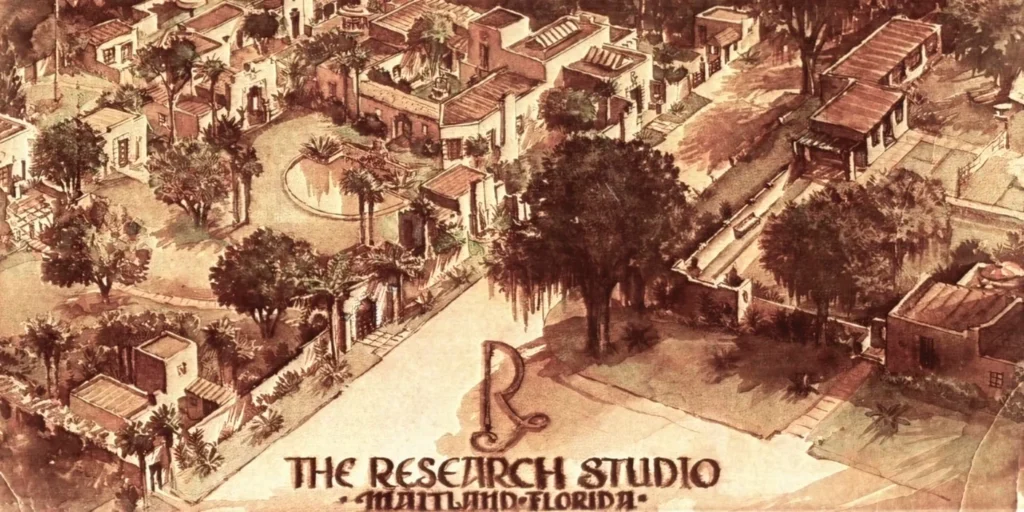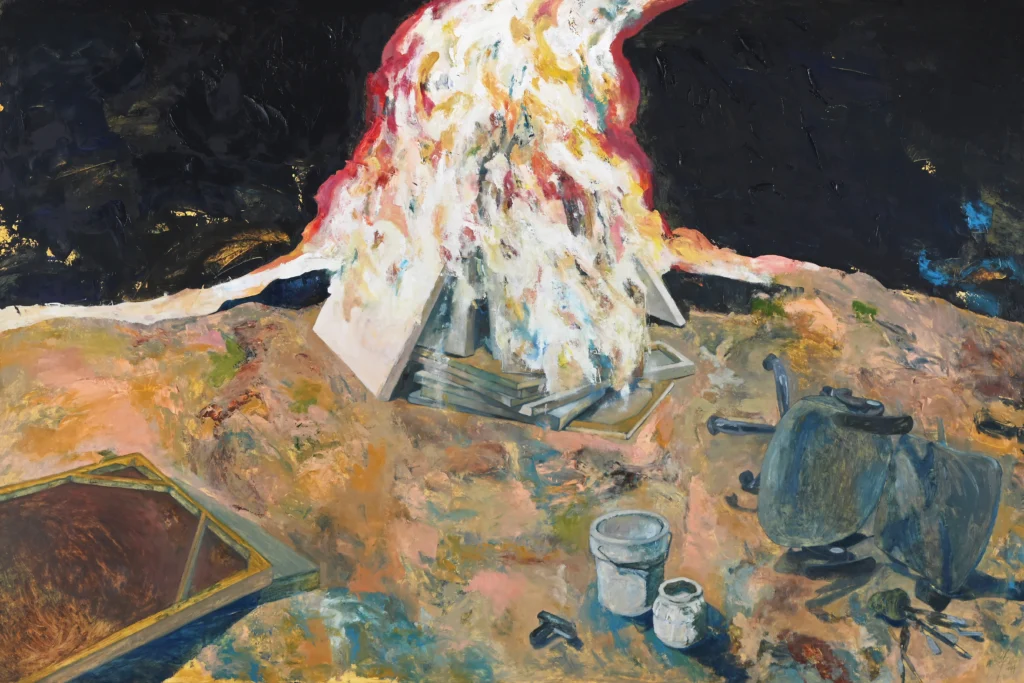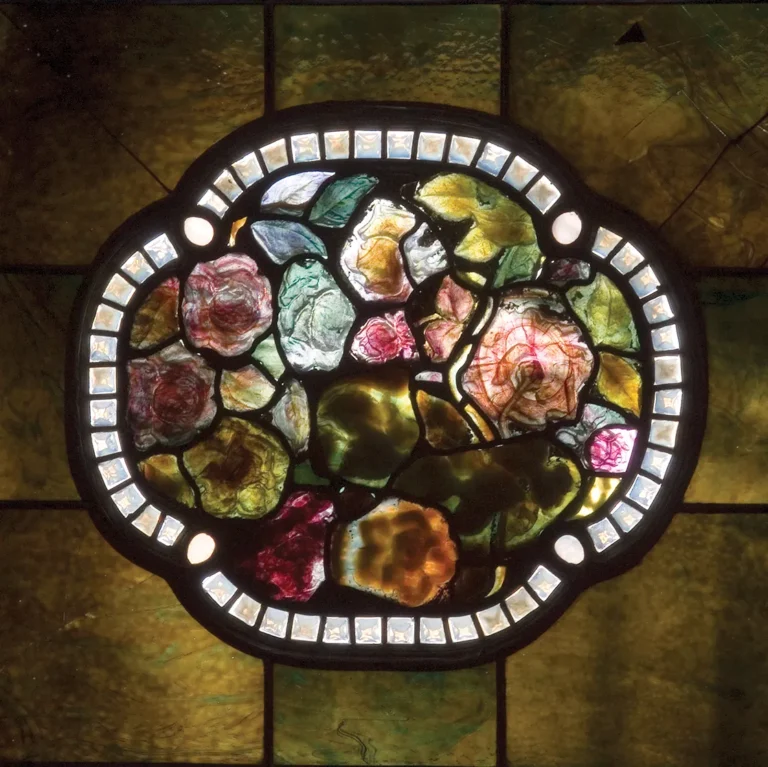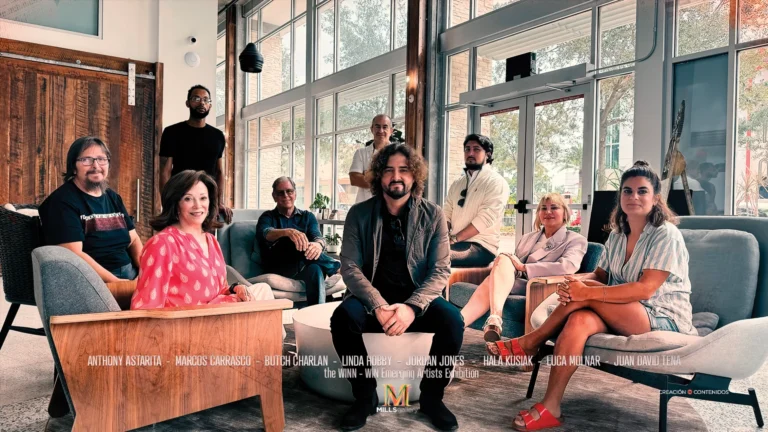

The Maitland Art Center as it was envisioned by founder J. André Smith turned out pretty much as he had hoped it would. But artist-in-residence Isobel Francisco, whose untitled painting is shown above, wondered what a similarly purposed facility might have looked like if it had been built employing cultural influences of the Philippines. | Courtesy Maitland Art Center
Two years ago, Maitland Art Center Executive Director Danielle Thomas and Chief Curator Dan Hess were sitting in the museum’s courtyard with Isobel Francisco, an artist-in-residence. Francisco marveled at the Mayan and Aztec influences that the originator, J. André Smith, incorporated into the buildings on the other-worldly campus.
Francisco, who is from the Philippines, wondered what the center might look like if it were reimagined using other cultural influences. And what form it might have taken had Smith decided to put roots down anywhere else other than Central Florida.
“Danielle and I looked at each other and we were like, ‘Wow,’” says Hess. “The idea has grown from there. Isobel is exploring the cultural relevance of what would have happened if a different art center had been birthed in the Philippines in the 1930s.”
Hess says that the timing is right for Pangarap: Espero Reimagined—which will run October 18 to January 4, 2026—since it will dovetail nicely with last summer’s Return to Espero. (“Espero,” translated from Spanish to English, means “I hope, I wait,” and was the name given by Smith to the fantasy village that he sketched while recuperating from injuries received in World War I.)
Return to Espero explored the genesis of the center through revealing and previously unseen correspondence between Smith and philanthropist Mary Louise Curtis Bok. Those letters, which span 1936 to 1954, evidenced far more conceptual contributions from Bok, who was known to be the center’s funder but not its defacto co-creator.
Today’s artist-in-residence program reflects the center’s original mission by providing studio space for 12 to 18 months to an established or emerging creator.
Few artists-in-residence go on to secure exhibitions following their temporary stays, but it was clear to Hess that Francisco had something to say. “She’s very perceptive, and there’s a deep well in her as far as how she can analyze how something comes together,” notes Hess.
After she completed her residency in 2023, Francisco returned to her home country and has been working there ever since. Because Pangarap: Espero Reimagined was a long-distance collaboration, there have been an unaccustomed set of challenges to navigate—including customs, shipping and video conference scheduling between time zones.
“Everything up until now has been good, but I’d be lying if I said it’s not a little nerve-racking,” says Hess. “But we also feel like we owe it to our viewers and our loyal followers who expect us to take chances.”
Translated from Filipino to English, “pangarap” means “to dream.” Francisco’s exhibition—the manifestation of her dream about a similarly purposed art center in the Philippines—will present a mix of paintings and historical texts.
The Maitland Art Center is located at 231 West Packwood Avenue, Maitland. For more information, call 407.239.2181 or visit artandhistory.org.






